Organizational allocation groups
The organizational level report lets you view allocation groups from multiple clusters, find common namespaces and workloads, and see their costs. As a result, you can better understand your Kubernetes costs across organization-wide groups and initiatives.
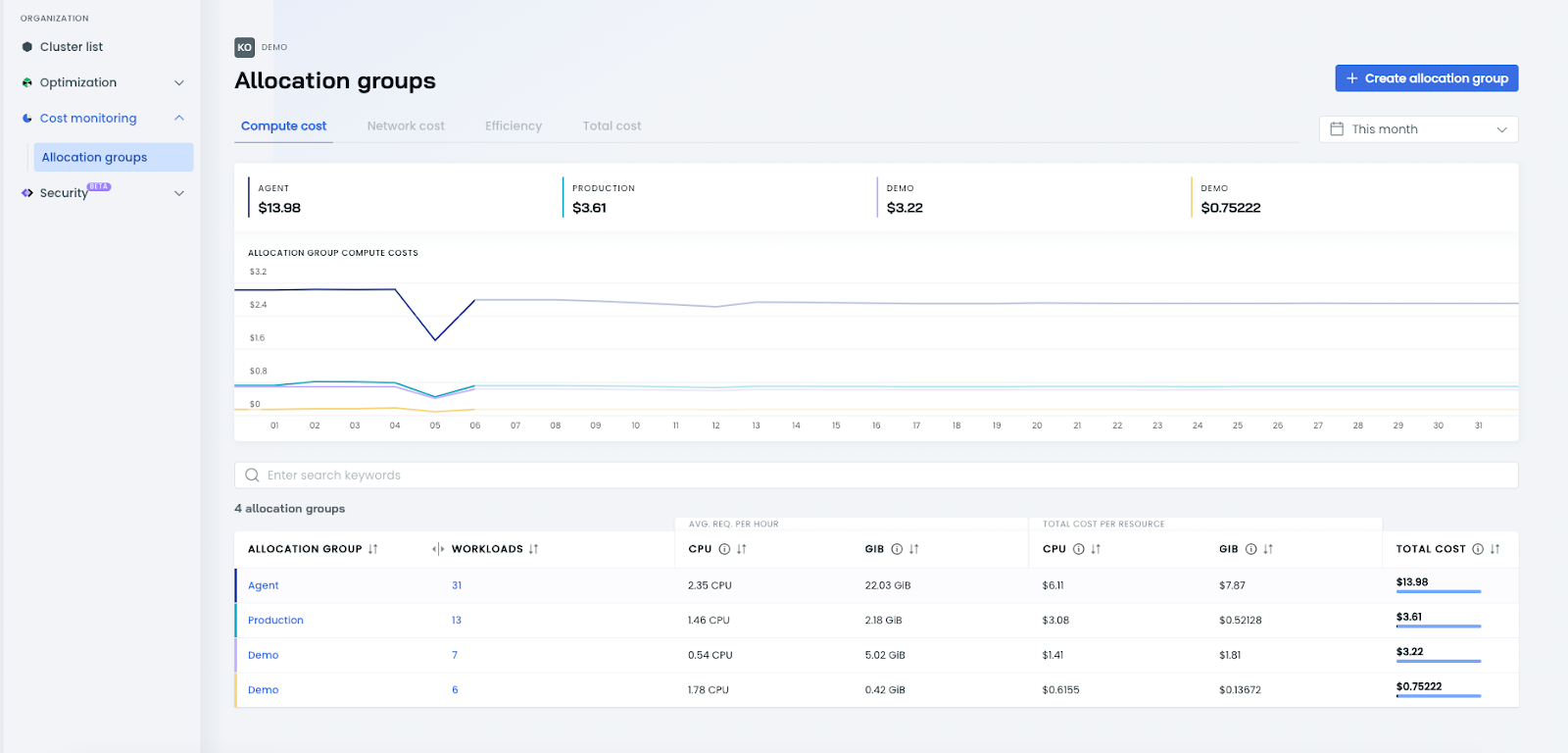
You can find it in the main CAST AI menu under the cost monitoring tab, where you can also create new organizational allocation groups.
What’s inside the organizational allocation group report
The organizational allocation group presents the selected clusters, workloads, and namespaces with summaries of their requested resources, costs per resource, and total costs.
When you click on the workload count in the summary, you can see details of all workloads in the group with information on the clusters they belong to.
The choice of workloads and clusters depends entirely on your needs. When creating an organizational allocation group, you select the clusters to include and filters like namespaces and labels.
Important!
Due to current limitations, the report needs to stay within the limit of 20,000 workloads. Exceeding this number can result in performance slowdowns.
How to create an organizational allocation group
Setting up an organizational allocation group is similar to what it looks like at the cluster level.
- Enter Allocation Group in the main menu and click the ‘Create allocation group’ option.
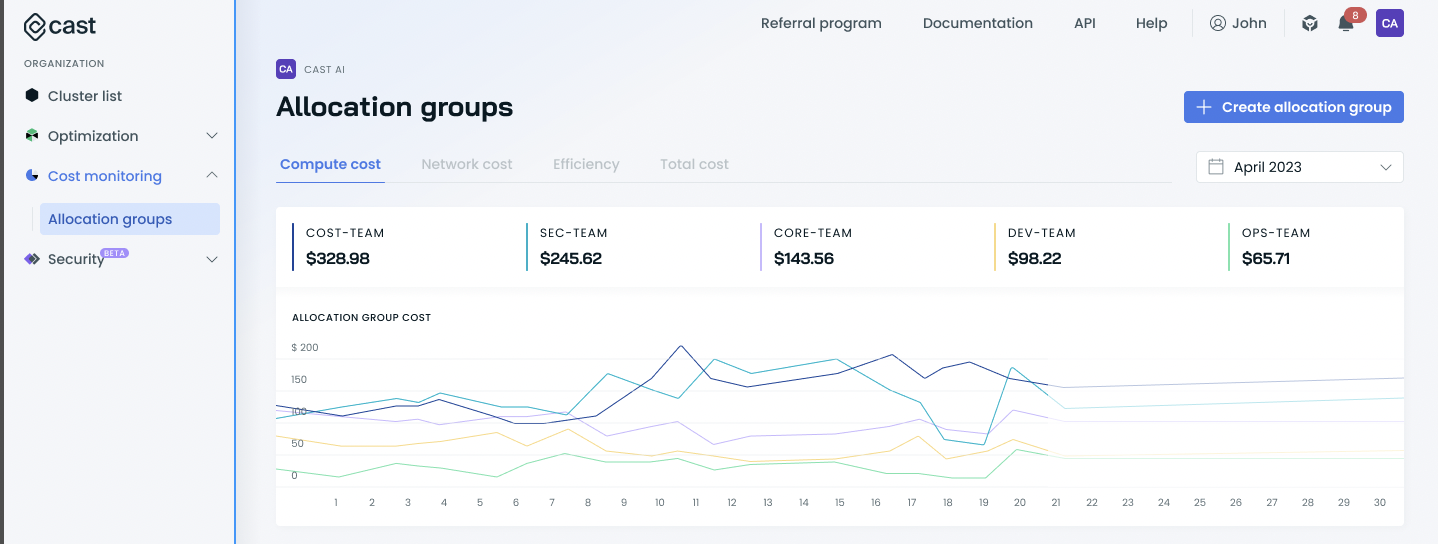
- Select the clusters you wish to include in your allocation group:
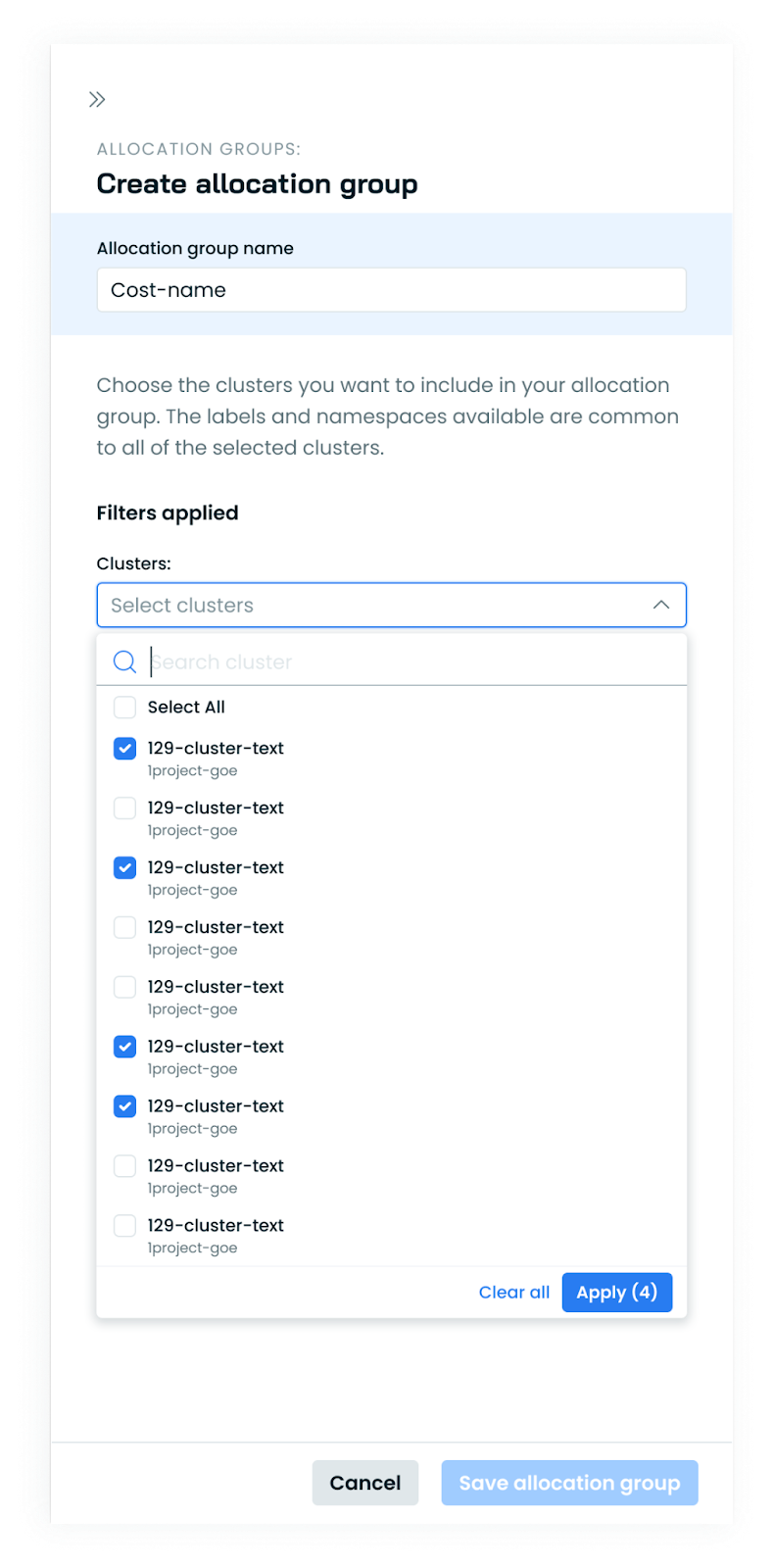
- Choose at least one filter: namespaces or workload labels.
Once done, CAST AI creates an allocation group that includes all the workloads from the clusters that match your filter. - When selecting the workload labels, choose their key and specify the values you want to include in the report.
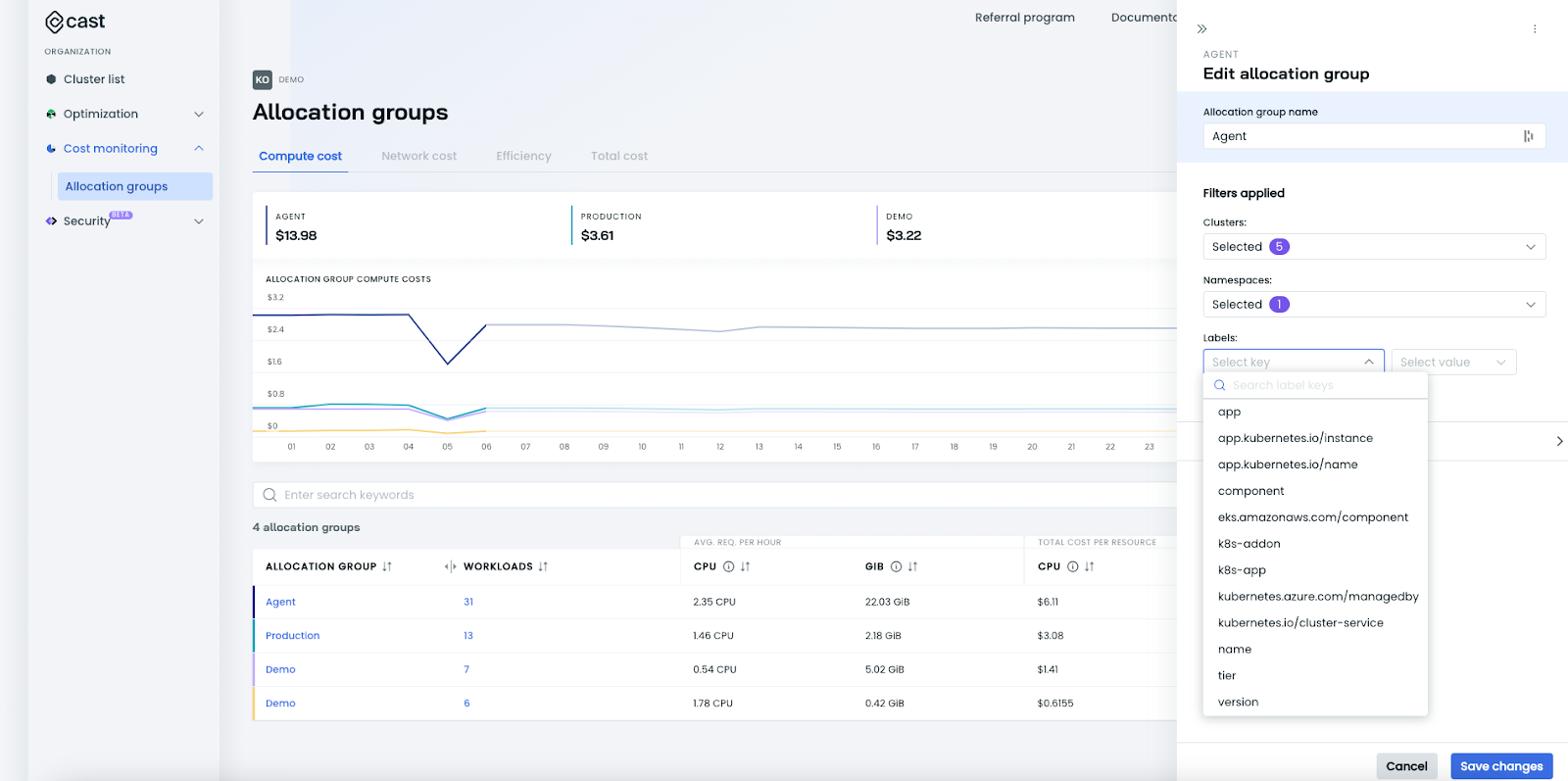
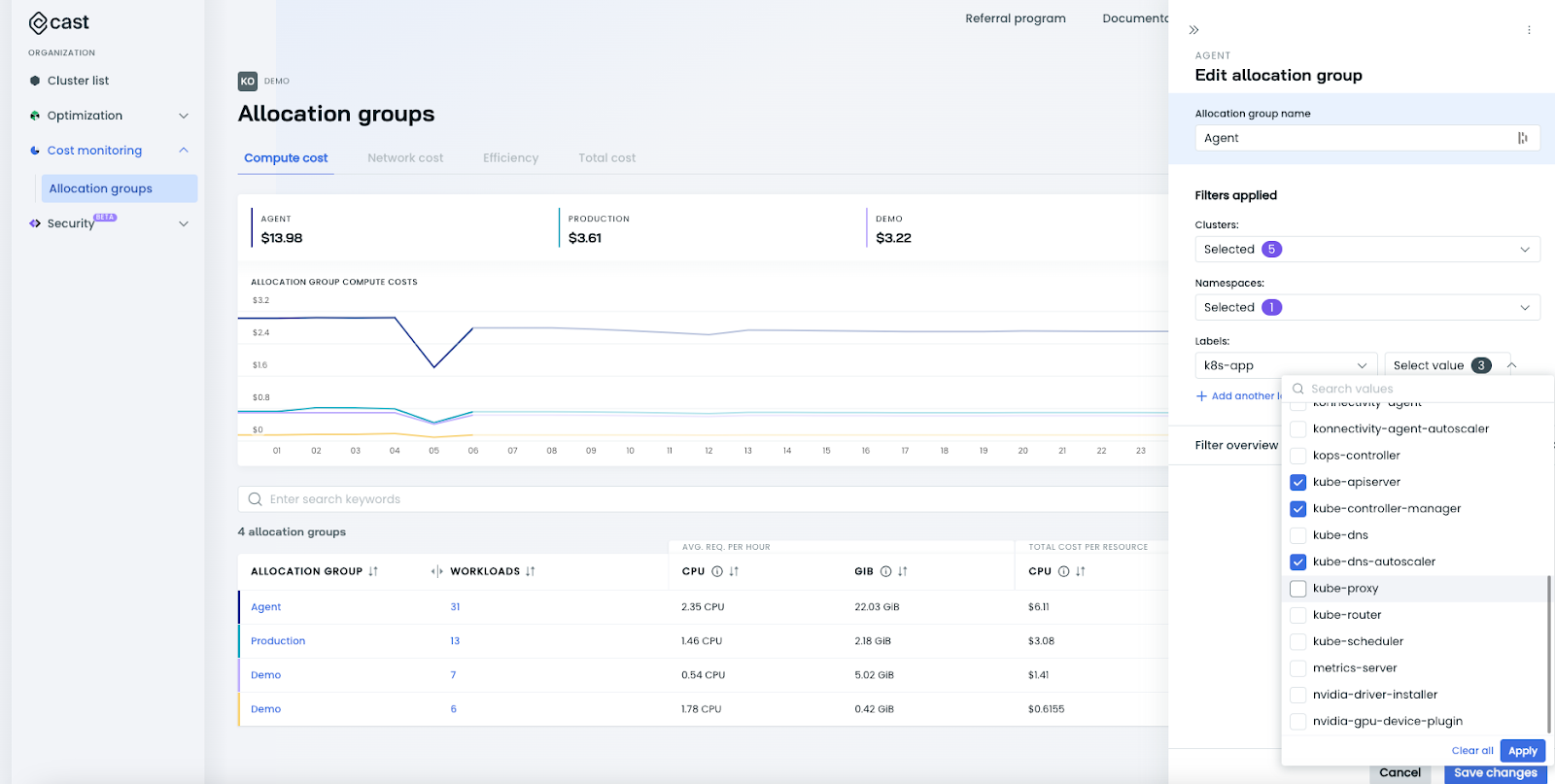
- To add a new key and value pair, click the ‘Add another label’ option and repeat the action.

Organizational and cluster-level allocation groups
The organizational allocation group also appears in the cluster-level report, showing relevant workloads with summaries.
Such multi-cluster allocation groups appear in cluster reports as any other allocation groups and show data relevant to the cluster you are viewing at the moment.
Cluster-level allocation groups are also visible in the organizational view but only include one cluster. You can edit your allocation groups by adding more clusters at any time.
Updated 2 months ago
